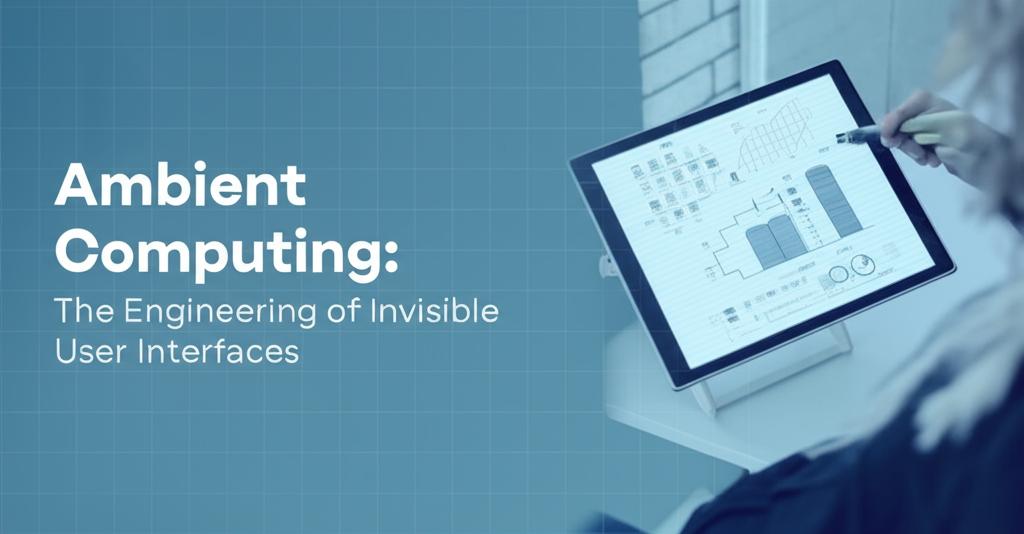Ambient computing is rapidly transforming our interaction with technology, embedding it so seamlessly into our environments that it becomes virtually invisible. This paradigm shift is moving us away from purpose-driven interactions with devices towards a reality where technology anticipates and responds to our needs more intuitively.
The core idea of ambient computing is to make technology fade into the background, there when you need it and out of the way when you don't. This involves a confluence of advancements in several key areas. Internet of Things (IoT) devices and sensors are the eyes and ears of ambient systems, gathering contextual data from our surroundings and our behavior. Artificial intelligence (AI) and machine learning (ML) are the brains, processing this data to understand situations, predict needs, and automate responses.
Natural language processing (NLP) and computer vision allow for more intuitive interactions, moving beyond screens and keyboards to voice commands, gestures, and even the mere presence of a user. Edge computing plays a crucial role by processing data closer to its source, reducing latency and enhancing privacy for real-time responsiveness.
The engineering of these invisible user interfaces presents unique challenges. One significant hurdle is interoperability – ensuring that devices from different manufacturers can communicate and work together seamlessly within an ambient ecosystem. Data management is another critical aspect, requiring robust systems for collecting, storing, and analyzing the vast amounts of data generated, all while ensuring privacy and security. Power efficiency is also paramount, as "always-on" devices need to operate sustainably.
Researchers and engineers are actively exploring innovative solutions to these challenges. This includes the development of "hidden interfaces" – displays and controls that can appear on demand from underneath everyday materials like wood, fabric, or mirrors, and then disappear when not in use. These interfaces aim to preserve the aesthetics of our living and working spaces, preventing an overload of visible screens and devices.
Furthermore, the design of ambient systems requires a human-centric approach. The goal is to create experiences that are not only functional but also mindful and considerate of user attention and well-being. Technology should adapt to users' needs and emotional states, rather than demanding constant attention or intruding on their lives. This involves designing for subconscious and intuitive interaction, allowing technology to operate in the background and enhance our relationship with the physical world and the people around us.
Key considerations for the future development of ambient computing include:
- Privacy and Security: With technology embedded deeply into personal spaces and collecting sensitive data, robust security measures and transparent data usage policies are essential to build user trust.
- Ethical Development: Ensuring that ambient systems are inclusive, fair, and do not diminish human agency or skills is a critical ethical consideration.
- Seamless Integration: The ultimate aim is for technology to weave itself into the fabric of everyday life so smoothly that it's indistinguishable from it, yet always ready to assist.
As ambient computing continues to evolve, it promises a future where technology doesn't just serve us, but truly understands and anticipates our needs, creating more intuitive, efficient, and ultimately, more human-centric environments.

